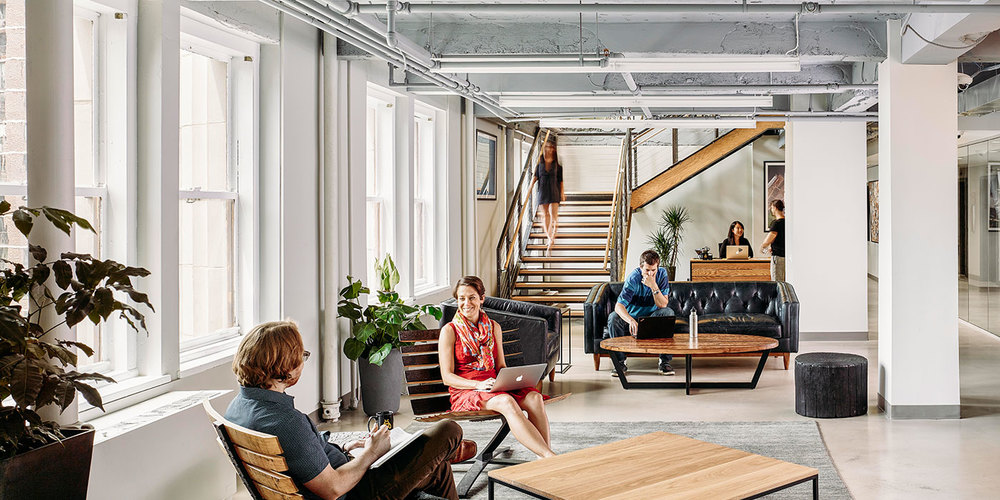Millennials prioritize work-life balance, it consistently tops the list of what Millennials look for when considering job opportunities.
Yet a balance in the traditional sense may not be feasible anymore. While Sweden recently implemented a 6-hour workday, in North America, the office is trending in the opposite direction. Workers now face longer hours due to increased workloads.
It’s a reality that many can’t escape. To help fix that, many organizations are looking to implement programs that strive for better work life balance for their employees, from company outings to perks like unlimited vacation. Even traditional organizations like Goldman Sachs are implementing these programs, such as mandatory Saturdays off for junior staff.
While these are steps in the right direction, the solution to achieving work-life balance could require a whole different approach.
Work-Life Integration
The real solution to a work-life balance may sound counter-intuitive at first: work-life integration. Work-life integration means that employees can complete personal tasks in the workplace, and similarly compete work tasks at home, or outside of the traditional 9-5 hours.
Millennials are looking for purpose in their jobs and are willing to carry out personal tasks during the day and work on evenings on weekends. Some of the changes happening with the workplace are moving towards this trend: more flexible, non-traditional work environments, increased amenities, and even increased integration of technology in the workplace.
Workspaces that promote work-life integration provide flexibility and seamless transitions from home to office, from the personal to the professional. Work-life integration takes a more holistic view of how work takes place, considering other aspects of a person’s life.
Blurring the Lines Between Work and Home

Increased workplace amenities promote spending more time at the office but do not necessarily involve working.
For example, some companies are now providing quality food for employees. This helps prompt employees to come in earlier for a breakfast meal, as well as lunch and staying late for dinner. It encourages socializing at meal times, as well as helps retain employees at work. This reinforces that work is not just a place for work, but also a place to eat, relax, and interact with others. It’s a valuable perk that increases employee happiness.
Flexible Workplaces
In Millennial studies and surveys, after a work-life balance, the ability to work flexible hours ranks 2nd or 3rd in terms of what employees look at when considering an employment opportunity.
It’s no wonder then that we are also seeing increased flexibility in the workspace through remote work options, hot-desking and coworking spaces. Connectivity provides the backbone for this and workplace culture fosters the rest. Areas like third spaces, for example, send the message that it is OK for employees to take breaks throughout the day and have a space to relax. Office wellness programs or fitness classes scheduled throughout the day to accommodate different schedules encourage flexibility and prioritizes wellness.
Increased flexibility also means that employees don’t have to worry about choosing between the home and office. Employees can choose to work from home for 2-3 days a week and come into the office for collaborative tasks. Their employer doesn’t have to worry about underutilized space either, as hot-desking systems are becoming commonplace. When employees do come into the workplace they are afforded the luxuries of connectivity at their workspaces and touch down points.
Connectivity
Connectivity is the greatest enabler of a work-life integration. Tech-savvy Millennials walk around with powerful computers in their pockets. With smartphones and laptops – today’s workforce embodies flexibility and mobility in the truest of senses. Emails are getting shorter and everything from meeting requests to large deals are being closed over mobile emails and applications.
Employees can also now access remote company servers while at home or travelling. Smartphones and the availability of powerful data connections help create that seamless work-life integration. The ability to move back and forth in and out of the office builds confidence in mobility, and empowers employees.
A New Way of Work
Work-life integration represents a shift to the new way that work will be done. Millennials are redefining what the workplace looks like. They want the best of both worlds even if that means bringing the two together.
Bringing work and life together doesn’t mean that employees should spend all their time at work nor is it meant to encourage that. Rather, creating a workplace that allows for a seamless transition between work and life addresses the realities of work and personal life. It recognizes that the 9 to 5 does not truly apply in our world anymore, and that personal events can and do take place during the work day, while work can take place during typical personal time. Companies need to support this by providing the tools to ensure that employees can integrate work and personal life effectively.



